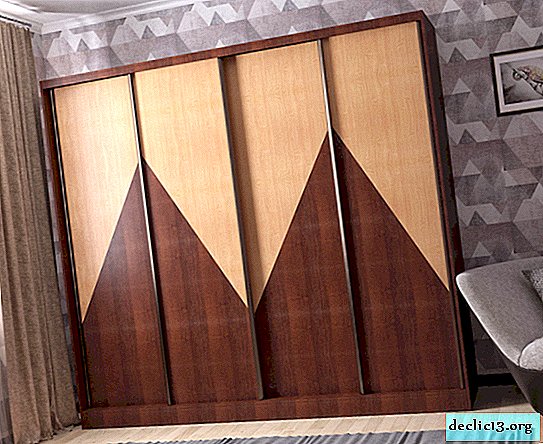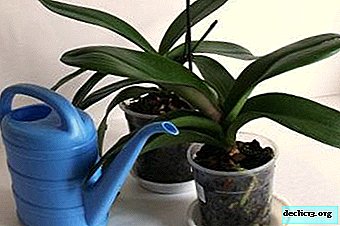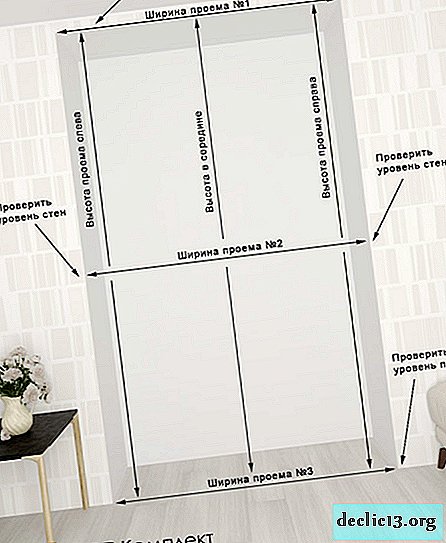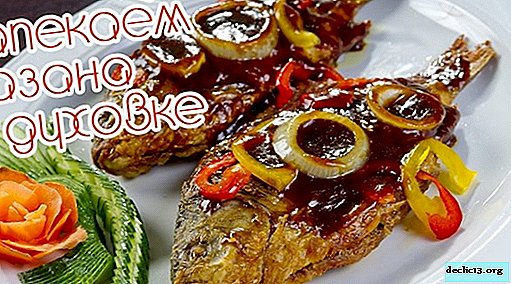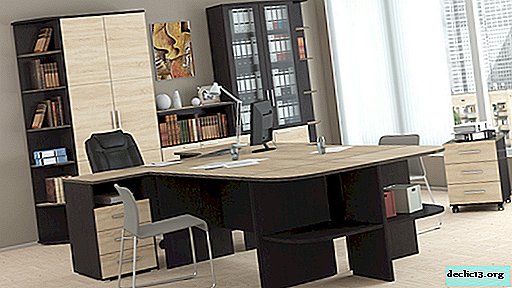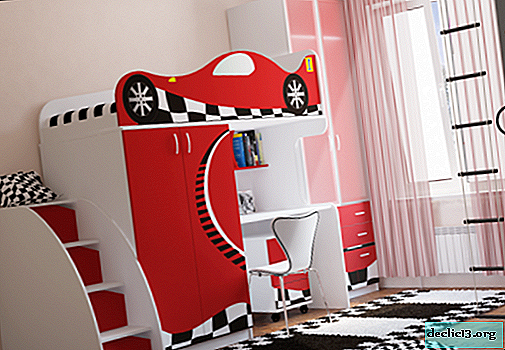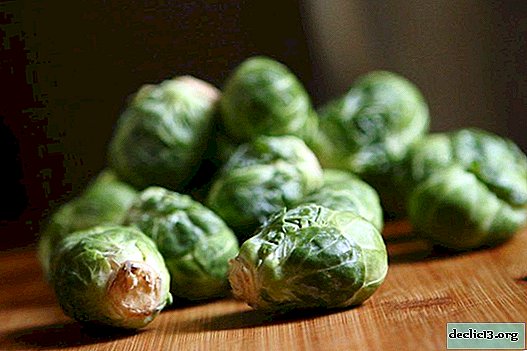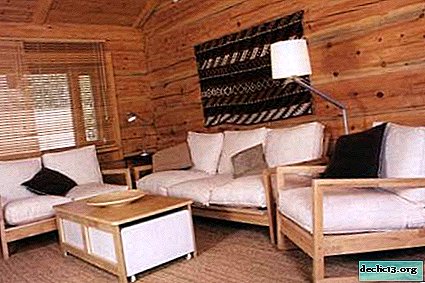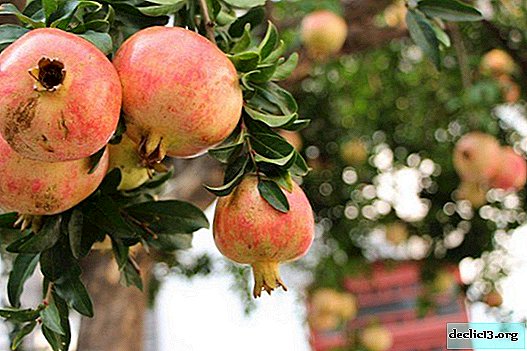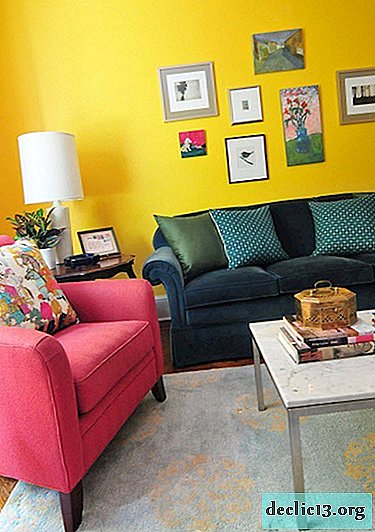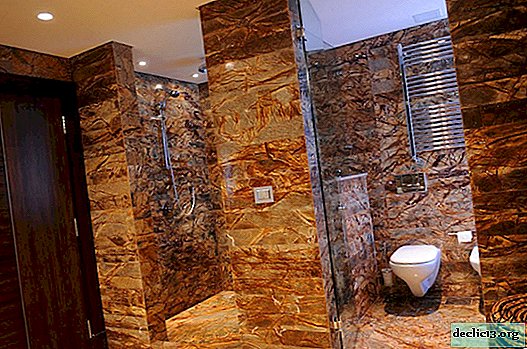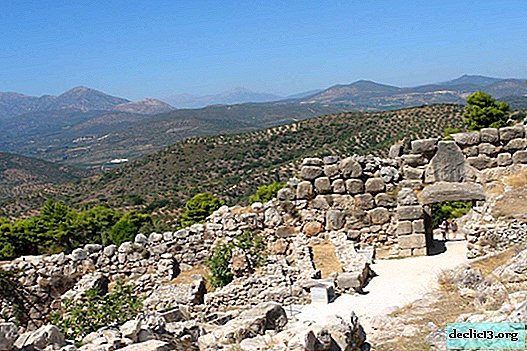Curacao Island - what you need to know before going on vacation
The island of Curacao is the pearl of the Caribbean. Its area reaches 444 km², and its population is more than 150,000 people. The largest island of the Netherlands Antilles in the past was a colony of Spain and Holland, but since 2010 it is a self-governing country within the Kingdom of the Netherlands.
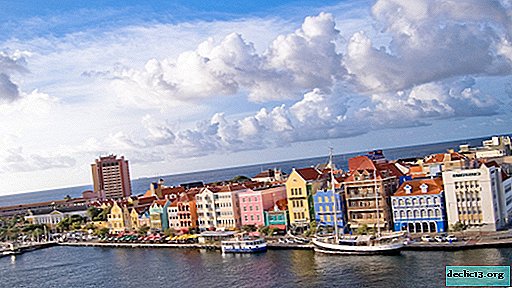
The main holiday! October 10 - Independence Day of Curacao.
 Alonso de Ojedoy
Alonso de OjedoyThe island was discovered at the end of the 15th century by the navigator Alonso de Ojeda, after which a Spanish protectorate was established. The metropolis used the colony as a base for the fleet, but due to the arid climate and lack of water, it soon lost interest in it, and for more than 10 years it was not clear which country owns the island of Curacao.
During this period, in the Netherlands, a dam that broke through flooded the fields, creating an urgent need for new agricultural land. The problem was resolved by the East India Company, under whose management Curacao was transferred in 1634. A huge number of slaves were brought to the island and began to grow fruits, nuts and corn, as well as to extract salt for supplies to the metropolis and sales to other countries of the world.
Need to know! The national currency of Curacao is the Netherlands Antillean guilder, but in many shops and museums in the country you can pay in dollars or by credit card.

No matter how strange it may sound, the abolition of slavery in the middle of the 19th century caused the fall of the island's economy. The first improvements became noticeable only after 50 years, when oil reserves were discovered in the depths of Curacao and a refinery was built.
In the second half of the 20th century, the island became a popular holiday destination among Americans and residents of Western Europe, but by the 2000s it had sunk into oblivion. Today, about 30% of the local infrastructure is abandoned, which is most noticeable on the wild beaches of Curacao.
What are the prices for holidays on the island and where to go here? Where are the best beaches in Curacao and do I need a visa to visit the country? The answers to these and other questions you are interested in are in our article.
Sights
Queen Emma's Pontoon BridgeAccording to tourists, this floating bridge is the most amazing attraction of the island, which has no analogues in other countries. Since 1888, it connects the northern and southern parts of Willemstad (the capital of Curacao) and serves as its visiting card.

"Swinging old lady" - this is the name of the bridge by the indigenous people of the country because of its unstable supports, which simply lie on the water and repeat every movement of the waves. The key feature of the bridge is not that it practically does not rise above sea level, but in the way by which it passes passing ships.

If usually when the vessel approaches, the bridge begins to open in the middle, rising upwards, then everything is much simpler: the operator detaches one of its parts and turns on the engine to the other - the obstacle for the ships just travels in different directions.
Those who come to rest in Curacao love this bridge also because in the evenings it is decorated with beautiful lights, and in the daytime it offers a postcard view of both parts of the city.

Punda and HandelskadeThe laws of the past! Previously, everyone who wanted to use the bridge had to pay tax. Due to the high price of the passage, inaccessible to many residents, the authorities introduced an unusual law: everyone who went barefoot could cross the bridge for free.

Punda is the most popular area of Willemstad, the postcard views of which are a symbol of the island of Curacao. Here, in the city center, there are vivid examples of Dutch architecture in the form of colorful houses, many cafes, souvenir shops and the local market. Most of the buildings in this area belong to the 17th century and are in poor condition, but thanks to the efforts and finances of UNESCO, vacationers can observe the gradual reconstruction of the area.

Pundu is also decorated with a beautiful promenade, from which tourists often watch the pontoon bridge. This area is a great place to take beautiful photos on the island of Curacao.
Kura Huland MuseumYou can find out the history of the people of Curacao and other countries of the Caribbean and Atlantic in the anthropological museum of Cura Huladna. It was opened in 1999 in the south of the island, near St. Anne's Bay. The largest private museum in Curacao covers an area of about 1.5 km2, and its exhibits are stored in 15 buildings, each of which tells about a separate period of world history.

The Kura-Huladna Museum presents in detail the periods of settlement of the island, the heyday of slavery and colonial imperialism, special attention is paid to the theory of the origin of man, the role of witchcraft and religion in the formed cultures of the Caribbean and Europe.


All inscriptions in the museum are made in papiamento, Dutch and English, you need to book a group tour in advance. At the entrance to the attraction, you can rent an audio guide in German or English, as well as buy a souvenir in the theme store.
Kura-Khulanda, located at Klipstraat 9, open every day except Sunday, from 9:30 a.m. to 4:30 p.m.
Entry price - $ 10 full ticket, for pensioners and children under 12 years old - $ 7, for students - $ 8.
The most unusual sight of the country was opened in 2002 and for more than 15 years it has been pleasing and surprising to everyone who came to rest on the island of Curacao. Among the pupils of the Academy there are not only dolphins, but also fur seals and lions, turtles, sharks and even stingrays - you can see each other closer, feed, and even swim with some in one bay!

Caring is Above All! The main advantage of the Dolphin Academy is that all its pupils do not live in aquariums, but in the open sea, so they feel free and not afraid of people.

The country's largest dolphinarium is located on the high seas, at Bapor Kibra. Ticket price - $ 20 per person, it includes a walk through the territory of the Academy and a dolphin training show (daily at 8:30, 11 and 14 hours). For a separate surcharge, you can order an individual scuba diving with mammals or swim with them in a group with 6 other vacationers. To get photos and videos taken during the swim, you need to pay $ 40.
National parkImportant! Before you go to the dolphinarium, reserve yourself a place in the group on the official website of the Academy.
A place where the elements reign, where every photo seems to be a masterpiece, and every corner of the earth is a paradise. In the most beautiful park in the country, you can get to know the ocean closer, see how violent waves crash against rocks, walk around caves or brighten up your vacation with a walk along a long beach.

The territory of the national park is a desert of stones and rocks with 4 viewing platforms and walkways connecting them together. At the entrance there is a small cafe with low prices, a full meal here can be ordered for $ 10-15 per person.

The park is open every day from 9 to 16 (the cafe is open only until 15). Admission price - $ 6. The name of the attraction on papamiento is Boka Tabla.

Tips before visiting
- It is better to come to the park by car or bicycle, since the distance between the main objects can reach one or two kilometers.
- Be sure to wear comfortable shoes, as most of the area is covered with stones of different sizes.
- Take a hat with you, as in the park there is absolutely no shadow, and drinking water.

The highest point in the country is Mount Sint-Christopher. On its territory more than 10 years ago, the eponymous wildlife park was opened. Climbing to the top is not fun for everyone who came to rest in Curacao, because travelers are often disturbed by the scorching sun and it is difficult to give a steep climb. Tourists usually reach their goal in 1-2 hours, overcoming rivers, fallen trees and slippery stones along the way to see the most beautiful view of the island of Curacao from a height of 372 meters.

It is better to climb the mountain at 7-8 in the morning, so as not to get sunburned in the bright sun later. Be sure to bring plenty of water, a hat and comfortable shoes with you, as well as many travelers are advised to wear trousers or protection on your knees - for the last 20 minutes you have to climb stones.
Diving and snorkelingScuba diving is a favorite pastime for many who come to Curacao for a vacation. There are many coral reefs located close to the coast, dolphins, turtles and various fish, and visibility in this area of the Caribbean is more than 30 meters. The best places for diving and snorkeling on the island:

- Playa Kalki. Just a few hundred meters from the coast, there are three coral reefs where sea turtles, stingrays and lobsters are hiding.
- Caracasbay. A few years ago, a small tugboat drowned off the Caribbean, which later became a favorite place for divers. It is located at a depth of only 5 meters and is home to moray eels, angelfish and even anemones.
- Cas Abao. A place where you can meet seahorses, parrot fish, stingrays, moray eels and sea sponges.
Advice! The largest water equipment rental center on the island is Gowestdiving. See prices and assortment on their website www.gowestdiving.com.
Beaches
Holidays in Curacao will be inferior if you do not spend at least a day on one of the beaches of the country and do not swim in the blue Caribbean Sea. On the island there are more than 20, many of them are wild.
KenepThe popular sandy beach of Willemstad with clear and calm water. Entrance to the coast is free, if you arrive early in the morning, you can catch one of the sunbeds and umbrellas left here.

On the shore there is a small cafe with reasonable prices, nearby is unguarded parking. The bottom is rocky, it is best to swim in special slippers. The entry into the water is gradual, on the right side there are stones from which you can jump into the sea.
Porto MariaThe beach with the most developed infrastructure is located on the west coast of the city. This is the best place for a family holiday in Curacao: there is a gradual entry into the water, there are no waves, there is a shadow, a fairly soft bottom.

Porto Maria has a cafe, shower, changing room and toilets, a rental area for snorkelling equipment and free parking. Those who wish can use the services of a massage therapist. To enter the water along the coast there is a wooden platform, the coast is clean.
Kleine Knip
A calm little beach and a great place for snorkeling. The entry into the water is rocky, the sea is clean, from the amenities on the territory only umbrellas and sunbeds. Sometimes locals come here and open up something like a cafe where snacks and light alcohol are sold. The beach is slightly dirty, since garbage is less often taken out of here, it is quite difficult to get there, it is located on the north-west coast of the country.
Cas abaoPrivate beach with a little rocky entry into the water. The sea is calm and very clean, which can not be said about the coast - there are many vacationers and few garbage cans. On the beach there is a cafe, there are sun loungers and umbrellas (rental price - $ 3 each), toilets.

Cas Abao is not the best place for snorkeling, there is a rather poor underwater world. Near the beach there is parking, the price for a car is $ 6.
MamboImportant! This place is not suitable for families with children, as poisonous mansas grow throughout its territory - special signs warn that they can not be touched.
The most noisy, developed and expensive beach in the country. It belongs to several hotels at once, the entry price is $ 3 per person. On the coast there are several restaurants and bars, free toilets, a children's inflatable town (10 USD), locker rooms and a shower. As elsewhere on the island, the beach is sandy, but the entrance to the water is rocky. Good place for snorkeling.

Note! Due to the fact that Mambo belongs to different hotels, rental prices for sun loungers and umbrellas vary from 3 to 15 dollars.
Accommodation
 Otrobanda hotel
Otrobanda hotelCuracao has no multi-story hotels or skyscraper hotels, most of the places where you can stay during your vacation are apartments in the form of houses and private villas.
Prices for accommodation on the island start at $ 35 per night in a double room of a three-star hotel and increase to $ 60 and $ 100 for a vacation in 4 and 5 star hotels. Staying in apartments with a pool, designed for 2-3 tourists, can be an average of $ 70.Find out RATES or book any accommodation using this form
Food
 Wandu cafe
Wandu cafeThere are a lot of bars and restaurants on the island - they are on almost every beach and street. Most of them offer delicious dishes at low prices, in a mid-level cafe you can fully dine for $ 10 per person, and dinner for two in a restaurant will cost $ 45. The best establishments of the island are Wandu Café, La Boheme and Plein Café Wilhelmina.
Weather and climate

The island of Curacao is great for relaxing between October and May. As in other areas with a tropical marine climate, it is always hot and sunny here - even in winter the temperature does not drop below + 27 ℃. You should not come to the island in the summer - at this time there is a rainy season, in addition, we do not recommend stopping to rest in the region of the northern coast - there is always a strong wind.
It's safe here! Many people know that in the Caribbean there is a "hurricane belt", so they are afraid to fly on vacation to Curacao and other islands. We hasten to reassure you - the country is much lower than this zone and is not exposed to natural disasters.
Visa Information
Since Curacao is part of the Kingdom of the Netherlands, it is part of the Schengen area. To enter the country, you need to apply for a single short-term visa for the Caribbean Islands or have an already open Schengen multivisa.
Note! The presence of Schengen allows you to visit not all the islands of the Caribbean, but only those that are part of the Netherlands - Curacao, Bonaire, Saba and Sint Eustatius.
How to get there
To date, there are no direct flights between the island and the CIS countries. The most convenient and fastest way to get to Curacao is to fly to a country with a transfer in Amsterdam. Travel time is about 13 hours.
 Willemstad Curacao International Airport
Willemstad Curacao International AirportCompare accommodation prices using this formNote! The federated islands within the Netherlands are not interconnected by ferry service, you can get from one to another only by plane.
Interesting Facts
- According to legend, the name of the island comes from the word "cura", translated from Spanish meaning "healing." Having first sailed to the island, Ojeda left on it members of his crew, hopelessly sick with scurvy. A few years later, again stopping off the coast of Curacao, he not only did not find their graves, but also personally heard from the sailors about the unique plants that saved their life - they contained in high concentration vitamin C, which was necessary for treating scurvy;
- Curacao was one of the largest slave markets of the 17-18 centuries;
- Papiamento - the official language of the country, is a mixture of Spanish, Portuguese, Dutch and English. Today it is spoken by almost 80% of the inhabitants of the island;
- 72% of the population of Curacao belongs to the Roman Catholic Church.

The island of Curacao is a beautiful place where everyone will find entertainment to their liking. Have a nice trip!

